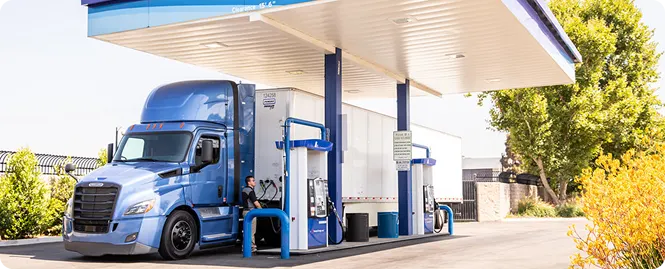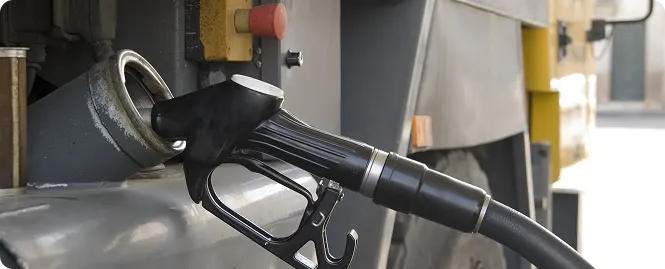How to Open a Gas Station in Oklahoma
Table of Contents
Key Takeaways
-
Successfully opening a gas station in Oklahoma requires a well-structured business plan covering startup costs, market analysis, and marketing strategies to ensure long-term success.
-
High-traffic areas with strong demand, easy accessibility, and minimal competition will maximize profitability and customer flow.
-
Gas station owners must obtain permits, licenses, and insurance while exploring financing options like personal assets, business loans, or SBA assistance.
-
A combination of fuel sales, convenience store offerings, and optional services like car washes can help increase revenue and improve customer retention.
-
A solid marketing strategy, quality service, and competitive fuel pricing are key to standing out in the gas station industry and ensuring long-term profitability.
Oklahoma’s gas station industry presents a promising business opportunity driven by a steady demand for fuel and convenience services. With the state’s extensive road networks and a thriving transportation sector, well-placed stations can generate strong revenue. Beyond fuel sales, convenience stores, coffee shops, and additional services create multiple income streams. Whether considering an independent setup or a gas station franchise, understanding the market and consumer habits is the first step toward building a profitable business.
Opening a gas station requires more than just finding a prime location and installing pumps. It includes obtaining the necessary permits, deciding whether to operate as an independent station or join an existing franchise, and understanding the startup costs involved. Every detail is crucial for long-term success, encompassing everything from planning to marketing strategies. Thorough research into regulations, financing options, and operational strategies can establish a strong foundation for a thriving gas station in Oklahoma.
Step 1: Researching the Market and Location
Choosing the right location is one of the most critical decisions owners must make when opening a gas station in Oklahoma. Factors like high-traffic areas near highways, busy intersections, or growing neighborhoods maximize visibility and attract more customers. Proximity to convenience stores or fast-food chains can also increase foot traffic, boosting overall sales. A well-placed station not only ensures steady fuel sales but also enhances profitability through additional services like car washes or retail stores.
Before committing to a set location, conduct a market analysis in order to understand the local fuel demand better and assess competing gas station businesses in the area. Factors such as population density, vehicle count, and commuting trends will help determine the best site. Consider whether the area has room for another station or if the market is already saturated. Evaluating competitors’ pricing strategies, service offerings, and customer preferences will help position your business effectively.
Understanding what drives customers to gas stations can give you a competitive edge. In rural areas, travelers may prioritize stations with clean restrooms and snacks, while urban customers may seek fast, self-service gas pumps. Regional preferences, fuel types, and pricing strategies all help win loyal customers and ensure long-term success.
Step 2: Creating a Business Plan
A well-crafted business plan is your blueprint for success when opening a gas station in Oklahoma. It not only helps you stay on track but also convinces lenders and investors that your venture is worth funding. Your plan should clearly define your business structure, startup costs, target market, and competitive edge. Whether you’re launching an independent station or opting for a gas station franchise, having a strategic roadmap will set the foundation for sustainable growth.
Your business plan should cover all critical aspects, from financial projections to an effective marketing strategy and clear revenue goals. Break down startup costs, including fuel, permits, property, and operational equipment expenses. Identify your target market, outlining strategies to attract customers through competitive pricing, promotions, and partnerships with convenience stores. Don’t forget to detail staffing needs, supply chain logistics, and safety protocols. A strong plan increases your chances of securing funding from investors or lenders.
Success in the gas station industry depends on more than just opening your doors—it’s about staying relevant and profitable over time. Consider future expansions, such as adding an auto repair shop, buying a franchise, or incorporating eco-friendly fuel options. Investing in technology, such as digital payment systems or EV charging stations, can help you stay ahead of trends. Long-term planning ensures your gas station remains competitive, maximizes profit margins, and adapts to changing consumer needs.
Step 3: Legal and Regulatory Requirements
Before opening a gas station in Oklahoma, securing the right permits, licenses, and registrations is crucial. You will need a business license, fuel storage permits, environmental clearances, and tax registrations for fuel sales. If you plan to sell alcohol or tobacco in your convenience store, additional licenses may be required. Working with local agencies ensures compliance, avoiding costly delays. Proper documentation not only keeps your business legal but builds trust with customers and suppliers.
Zoning laws decide where gas stations can be built and where they cannot, ensuring that they meet safety and environmental standards. Local regulations may restrict station placement near schools or residential areas. Compliance with fire codes, ADA accessibility, and underground storage requirements is non-negotiable. Engaging with local zoning boards early can help prevent unexpected setbacks. Before breaking ground, ensure your business plan aligns with the designated legal frameworks to avoid costly revisions or denied approvals.
Managing fuel storage involves strict environmental regulations to prevent leaks, contamination, and hazards. Oklahoma mandates regular inspections, leak detection systems, and proper waste disposal methods for underground tanks. You’ll also need to follow federal guidelines under the Environmental Protection Agency (EPA). Ignoring these regulations can lead to hefty fines or business shutdowns. Investing in modern fuel storage solutions and ongoing compliance checks will keep your station running smoothly and protect your business and the environment.
Step 4: Securing Financing
Launching a gas station in Oklahoma requires a solid financial foundation. Understanding your options is crucial whether you’re using personal assets, securing a business loan, or attracting investors. Traditional bank loans, Small Business Administration (SBA) loans, and alternative financing like franchise funding or private investors can help cover startup costs. Each option comes with different requirements, interest rates, and repayment terms, so selecting the right financial path will set your business plan up for success.
A strong business plan is key to securing funding. Lenders and investors will expect detailed financial projections, which should include startup costs, profit margins, and operating expenses. You will need a well-structured market analysis, a marketing strategy, and a clear outline of how you will be generating business revenue. Proper documentation—such as tax returns, cash flow statements, and business credit reports—demonstrates your financial reliability. A polished presentation can make the difference between approval and rejection.
The Small Business Administration (SBA) and state programs offer funding opportunities for gas station owners. Grants, while competitive, provide a way to fund specific aspects of your business, such as environmental compliance or fuel efficiency initiatives. Additionally, low-interest loans and tax incentives may be available for small business owners who are investing in high-traffic areas or underserved communities. Taking advantage of these resources can ease financial strain and make starting a gas station more accessible.
Step 5: Selecting the Right Equipment and Suppliers
Equipping your gas station in Oklahoma with the right tools is essential for smooth operations. Fuel dispensers, underground storage tanks, and point-of-sale (POS) systems are the backbone of your business. Modern POS systems help track sales, manage inventory, and process payments efficiently. Investing in safety features like leak detection systems and fire suppression tools ensures compliance with environmental regulations. Well-maintained gas pumps and digital payment options improve customer experience and keep your station running efficiently.
Working with reliable fuel suppliers helps keep your gas station stocked and in the game. Partnering with reputable fuel brands can enhance credibility and attract loyal customers. When negotiating contracts, consider pricing structures, delivery schedules, and branding requirements. Some gas station franchises may offer fuel at discounted rates, but independent stations have the flexibility to choose suppliers with the best terms. A well-negotiated supplier agreement ensures consistent fuel availability and helps maintain competitive profit margins.
A gas station is so much more than just selling fuel—it’s an opportunity to offer more. Adding a convenience store, car wash, or auto repair services can create multiple revenue streams. Stocking high-demand items, offering coffee or quick meals, and providing essential vehicle services attract repeat customers. Loyalty programs, promotions, and partnerships with local businesses can further boost sales. By diversifying your offerings, your station becomes more than a pit stop—it becomes a go-to destination.
Step 6: Building and Designing the Gas Station
Building a gas station in Oklahoma requires careful planning to balance functionality, efficiency, and visual appeal. The layout should ensure easy access for vehicles while maximizing space for fuel pumps, parking, and a convenience store. Choosing a high-traffic area with visibility from the main roads can increase customer flow. Additionally, designing a welcoming storefront with proper lighting and signage enhances your station’s appeal. Investing in durable materials and modern architecture can create a lasting, professional look.
Safety and compliance should be at the forefront of your construction plans. Implementing safety measures such as fire suppression systems, leak detection technology, and proper ventilation helps ensure that your station meets environmental and safety regulations. Accessibility is equally essential—your design should be inclusive of ADA-compliant ramps, parking spaces, and easy-to-navigate walkways. Adhering to Oklahoma’s zoning laws and building codes helps prevent legal roadblocks and guarantees a smooth approval process for your gas station.
A well-thought-out layout improves customer experience and boosts sales. Wide fueling lanes, clearly marked exits, and a clean, well-stocked convenience store encourage repeat business. Comfortable seating areas, modern restrooms, and efficient checkout counters enhance the overall customer experience. An innovative design isn’t just about looks—it’s about making each visit enjoyable.
Step 7: Hiring and Training Employees
Hiring the right employees is crucial for running a successful gas station in Oklahoma. Look for candidates with strong customer service skills, reliability, and problem-solving abilities. Management roles require experience in business operations, inventory handling, and leadership. Maintenance staff should be skilled in equipment upkeep and safety procedures. Use online job postings, local hiring fairs, and employee referrals to find the best fit. A strong team ensures smooth day-to-day operations and a positive customer experience.
Proper training keeps employees informed about safety protocols, operational procedures, and customer service best practices. Employees need to understand how to handle fuel safely and respond effectively to emergencies. Customer service training ensures that they can provide friendly and efficient interactions at the register. Operational training covers essential areas like inventory management, the use of the POS system, and regulatory compliance. Ongoing training programs are crucial for keeping employees up to date and enhancing efficiency.
A well-organized employee scheduling system keeps operations smooth—automated scheduling software to track shifts and minimize overtime and understaffing. Payroll management should be streamlined with reliable accounting software or professional payroll services to ensure timely and accurate payments. Satisfying employees with fair scheduling and prompt wages enhances retention and workplace morale.
Step 8: Marketing and Promotion
Launching a gas station in Oklahoma is exciting, but getting customers through the door requires smart marketing. Use eye-catching banners, direct mail flyers, and roadside signs to grab attention. Advertise in local newspapers, radio stations, and online directories to spread the word. Host a grand opening event with discounted fuel prices, free car washes, or giveaways to draw a crowd. A well-planned local advertising strategy builds awareness and establishes your gas station as a go-to spot.
Social media can act as a powerful tool for attracting more customers. Create a buzz online via posting on company’s Facebook page, Instagram profile, and Google Business listing to keep customers informed about fuel prices, promotions, and special events. Launch a loyalty program offering discounts or rewards for repeat visits. Limited-time deals, such as "Fuel Up Fridays" with cents-off-per-gallon discounts, encourage frequent stops. Engaging with customers online helps build a strong community around your brand.
Collaborate with local businesses, schools, and community organizations to increase brand awareness. Offer cross-promotions with nearby convenience stores, car washes, or auto repair shops. Sponsoring local teams or community events builds goodwill and attracts loyal customers. The more visible your business is in the community, the more traffic you generate.
Step 9: Ongoing Operations and Maintenance
Managing a gas station in Oklahoma requires a sharp focus on daily operations. Keeping the fuel dispensers running, convenience store shelves fully stocked, and POS systems functional ensures a smooth service. Inventory management is crucial—track fuel levels, snacks, and essential supplies to avoid shortages. Fuel pricing strategies should balance competitiveness and profitability by monitoring market trends and local competitors. Offering loyalty discounts and promotions can attract regular customers while maintaining steady revenue and customer satisfaction.
Protection and security should be a top priority for gas stations. A well-maintained station is necessary for safety and regulatory compliance. Routine inspections of fuel tanks, pumps, and fire suppression systems help prevent hazards. Keeping the store, restrooms, and fueling areas clean and well-lit enhances customer experience. Adhering to local, state, and federal safety laws, including hazardous material handling and emergency response plans, ensures a smooth and risk-free operation while avoiding potential fines or legal issues.
Encouraging feedback helps refine operations and build loyalty. The customer's input is valuable whether it’s through online reviews, surveys, or in-store comment cards. Addressing complaints rapidly in regards to fuel prices, service speed, or store cleanliness shows commitment to improvement. Implementing helpful suggestions fosters trust and keeps customers coming back.
Conclusion
Launching a gas station in Oklahoma can involve thorough planning—from selecting the right location and securing permits to managing finances and hiring staff. A strong business plan, reliable fuel suppliers, and strategic marketing set the foundation for success. Staying compliant with local regulations helps ensure smooth operations and long-term profitability.
Insurance protects your gas station and convenience store from unexpected risks like property damage, employee injuries, and liability claims. Policies like general liability, workers’ compensation, and commercial property insurance protect your investment. The right coverage minimizes financial losses, ensuring your business stays operational even after accidents, theft, or natural disasters.










